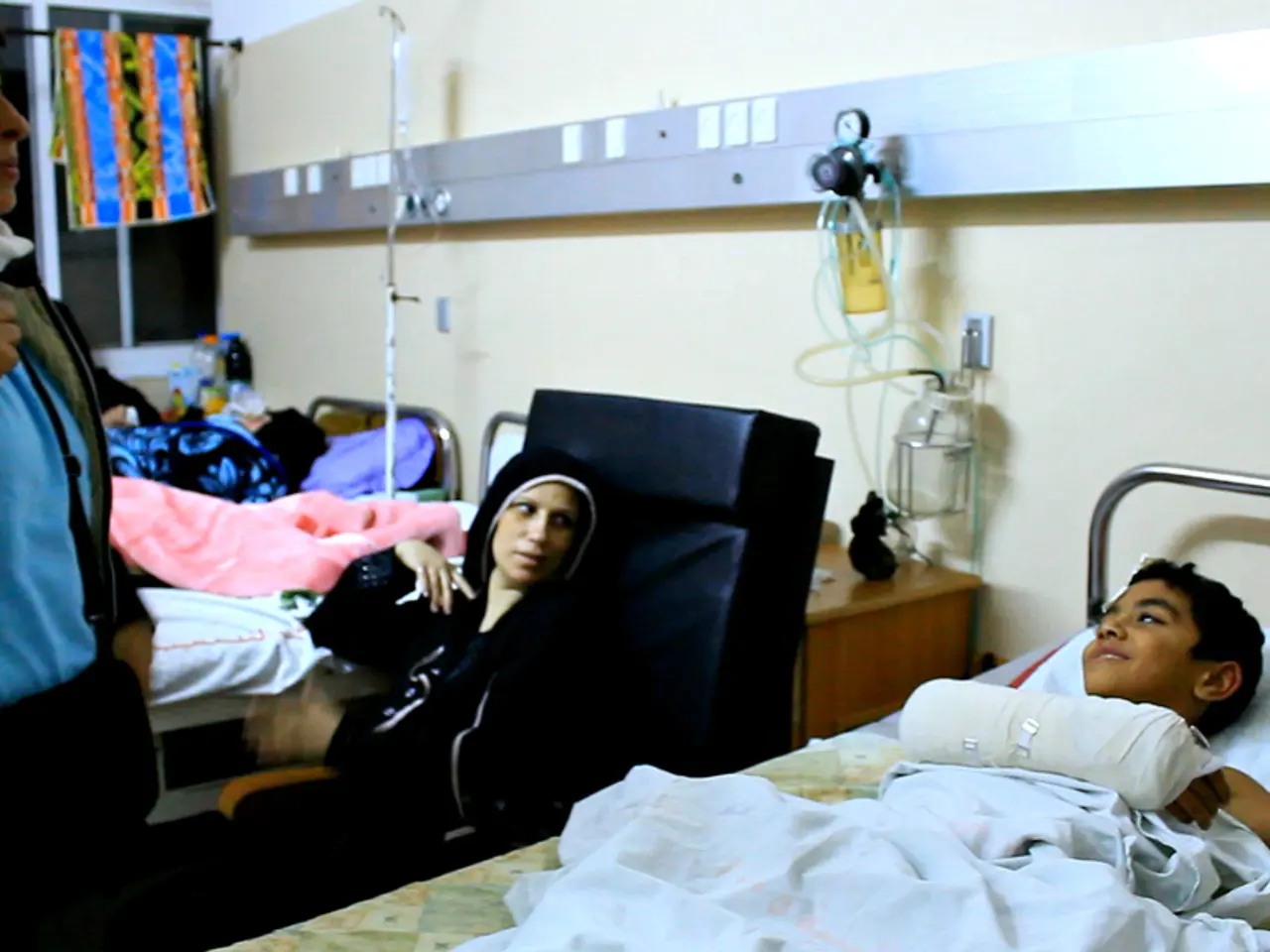Under-eye skins bumps akin to chicken: Causes and Remedies
White bumps under the eyes can be a common concern for many individuals. These bumps can be caused by various conditions, each with distinct characteristics and treatment options. Here's a breakdown of four common causes: milia, syringomas, styes, and chalazia.
Milia are small, hard white bumps that occur due to trapped dead skin cells (keratin) clogging the sweat ducts under the skin. They are often found on the eyelids and cheeks and can appear after skin trauma, irritation, use of heavy creams, or sun damage. Milia are generally harmless but can persist for weeks or months. Treatment includes gentle regular exfoliation with ingredients like salicylic acid, glycolic acid, or retinol, avoiding squeezing, and in some cases, clinic procedures like electrolysis or cryotherapy may be used.
Syringomas are benign sweat duct tumors appearing as small, flesh-colored to white bumps typically around the eyes. They are usually harmless and require no treatment unless desired for cosmetic reasons. Treatment options may include laser therapy or surgical excision.
Styes (hordeolum) are painful, red, swollen bumps caused by bacterial infection of the eyelid oil glands. They usually present with tenderness, swelling, and sometimes pus. Warm compresses and good eyelid hygiene are typical treatments, and antibiotics may be prescribed if infection is severe.
Chalazia are chronic, painless lumps caused by blocked oil glands in the eyelid, often larger than styes and not infected. They may resolve spontaneously or require warm compresses; persistent chalazia might need medical treatment like corticosteroid injections or minor surgery.
While milia, syringomas, styes, and chalazia are generally benign and not linked to cancer, any persistent, rapidly growing, or unusual lesion under the eye should be evaluated by a healthcare professional to rule out rare but serious conditions.
In summary:
| Condition | Cause | Symptoms | Treatment | Cancer Risk | |-----------|-------|----------|-----------|-------------| | Milia | Trapped keratin dead skin cells | Small white hard bumps, often painless | Exfoliating acids, professional removal | Very low | | Syringomas | Benign sweat duct tumors | Small white/flesh-colored bumps | Cosmetic treatment if desired | Very low | | Styes | Bacterial infection of eyelid glands | Red, tender, swollen bumps | Warm compresses, antibiotics | Very low | | Chalazia | Blocked oil glands, non-infectious | Painless lump on eyelid | Warm compresses, steroids, surgery | Very low |
If you have persistent or concerning bumps, especially accompanied by other symptoms, consult a healthcare provider for proper diagnosis and management. It's essential to maintain good hygiene and seek professional help when necessary to ensure the health of your eyes and skin.
[1] American Academy of Dermatology. (n.d.). Milia. Retrieved from https://www.aad.org/public/diseases/a-z/milia-overview [2] American Academy of Dermatology. (n.d.). Syringoma. Retrieved from https://www.aad.org/public/diseases/a-z/syringoma-overview [3] American Academy of Ophthalmology. (n.d.). Chalazion. Retrieved from https://www.aao.org/eye-health/diseases/chalazion-overview [4] American Academy of Dermatology. (n.d.). Stye. Retrieved from https://www.aad.org/public/diseases/a-z/stye-overview
- Some individuals might experience puffy white bumps under their eyes due to a common condition called milia, characterized by trapped dead skin cells.
- Syringomas, another cause of white bumps, are benign sweat duct tumors that often appear around the eyes, presenting as small, flesh-colored to white bumps.
- Styes, or hordeolum, are painful, inflamed, red bumps under the eyes caused by bacterial infection of the eyelid oil glands.
- Chalazia, a chronic condition, are painless, non-infectious lumps under the eyes caused by blocked oil glands in the eyelid.
- Predictive treatment options for milia involve gentle regular exfoliation with ingredients like salicylic acid, glycolic acid, or retinol.
- Syringomas may require laser therapy or surgical excision if desired for cosmetic reasons.
- Stye treatments typically involve warm compresses and good eyelid hygiene, while antibiotics might be prescribed for severe infections.
- Chalazia are often treated with warm compresses, corticosteroid injections, or minor surgery if they persist.
- Cancer risk associated with milia, syringomas, styes, and chalazia is very low.
- Obesity, atopic dermatitis, diabetes, HIV, cancer, depression, multiple sclerosis, sclerosis, psoriasis, and eye-health issues can impact overall health and wellness, including skin care and mental health.
- Mild dry skin around the eyes can worsen the appearance of white bumps, emphasizing the importance of maintaining proper skin-care routine and hydration.
- In rare cases, persistent, rapidly growing, or unusual lesions under the eye may require medical evaluation to rule out serious conditions such as prep cancer or other eye degeneration diseases.
- Macular degeneration, an age-related eye disease, can lead to loss of central vision, highlighting the significance of regular eye-health checkups.
- Since scientific advancements continue to improve the understanding and treatment of various medical conditions, it's crucial to rely on credible medical research and consult healthcare professionals for accurate information and treatment options.




